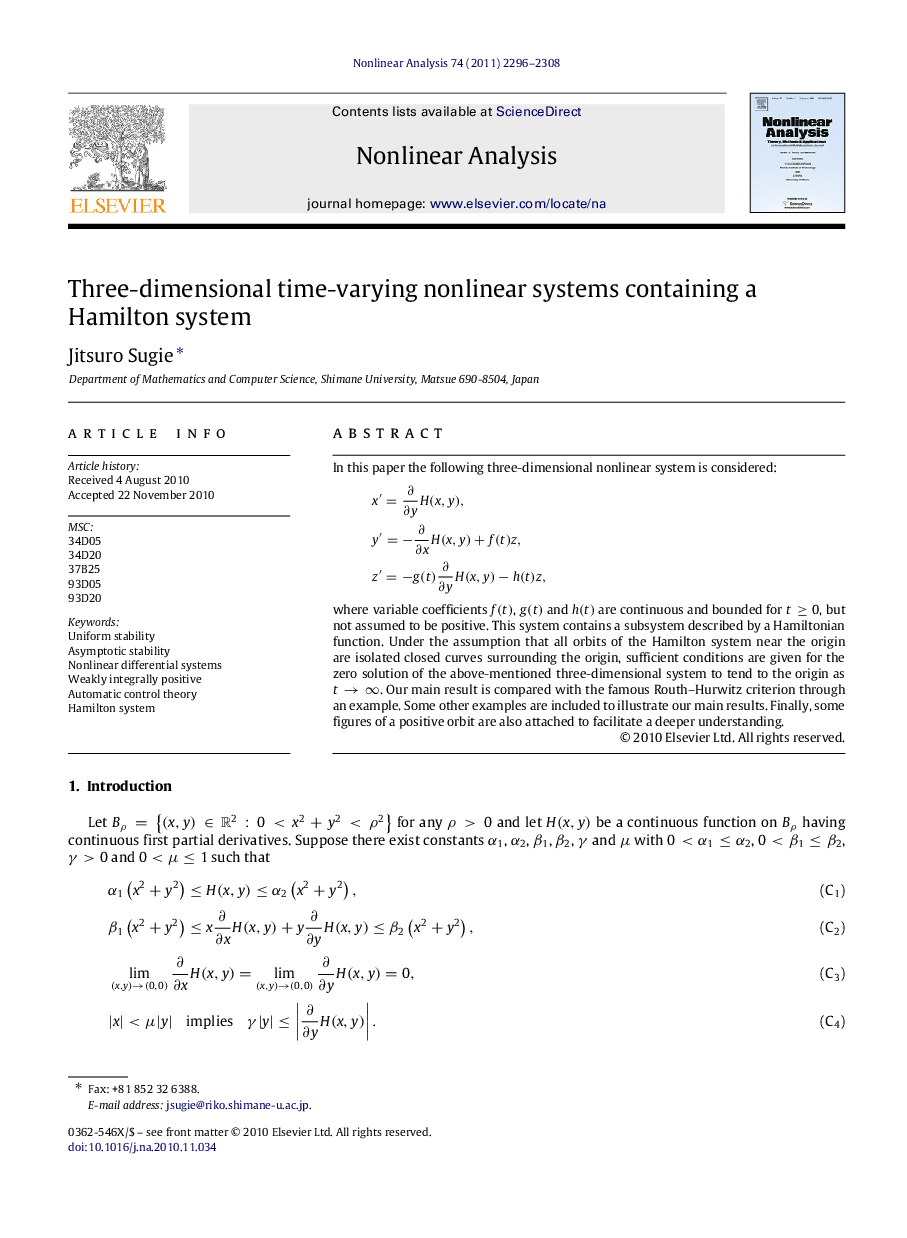| Article ID | Journal | Published Year | Pages | File Type |
|---|---|---|---|---|
| 841695 | Nonlinear Analysis: Theory, Methods & Applications | 2011 | 13 Pages |
In this paper the following three-dimensional nonlinear system is considered: x′=∂∂yH(x,y),y′=−∂∂xH(x,y)+f(t)z,z′=−g(t)∂∂yH(x,y)−h(t)z, where variable coefficients f(t)f(t), g(t)g(t) and h(t)h(t) are continuous and bounded for t≥0t≥0, but not assumed to be positive. This system contains a subsystem described by a Hamiltonian function. Under the assumption that all orbits of the Hamilton system near the origin are isolated closed curves surrounding the origin, sufficient conditions are given for the zero solution of the above-mentioned three-dimensional system to tend to the origin as t→∞t→∞. Our main result is compared with the famous Routh–Hurwitz criterion through an example. Some other examples are included to illustrate our main results. Finally, some figures of a positive orbit are also attached to facilitate a deeper understanding.
